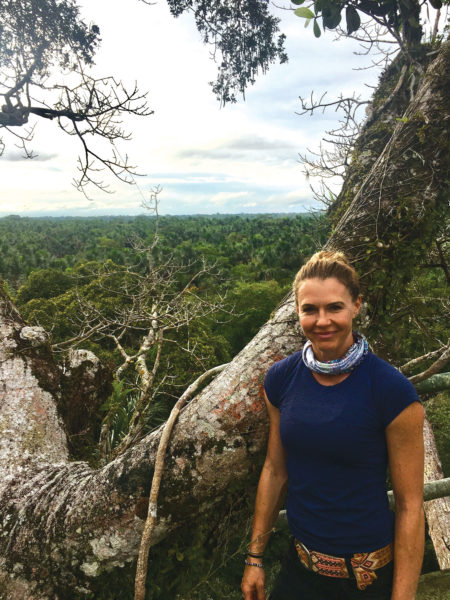 This past summer I found myself deep in the heartland of the Amazon jungle at night, with a flashlight and a naturalist guide. This experience was as far as I have ever been out of my comfort zone; yet, it drew me closer to understanding how everything in life ultimately works together to collectively sustain us.
This past summer I found myself deep in the heartland of the Amazon jungle at night, with a flashlight and a naturalist guide. This experience was as far as I have ever been out of my comfort zone; yet, it drew me closer to understanding how everything in life ultimately works together to collectively sustain us.
The jungle was buzzing with spiders, frogs, tarantulas and many other nocturnal creatures. My guide, a member of the indigenous Kitchwa community, learned the rhythm of the jungle as he grew up. At one point he asked me to stop, turn my flashlight off, and close my eyes to just listen. The symphony of sounds was alluring. The communication of crickets, frogs, cicadas, bats, and night birds were echoes of nature’s communication system that left me pondering the cooperative connectivity of this amazing network of organisms. This lesson, as to how this primordial experience of the jungle connects to our own optimal survival, remains with me.
The next day I headed back into the jungle with Avel, my adventurous and knowledgeable guide, and stood under a giant kapok tree. This majestic tree had a towering, expansive character. I felt so small beneath its massive span, yet embraced at the same time. This sacred tree serves as an important niche in the ecosystem of the rainforest growing to 226 ft. and living up to 1,200 years.
A visit to another part of the forest moved us from verdant and lush plant life to a completely open space where nothing seemed to be growing except a few trees. In this open space, Avel broke a twig off a sparse tree and split the branch open, revealing a dozen tiny ants within the branch. An invitation was extended to taste this delicacy. These “lemon ants” taste just like lemons and have a relationship with the tree in which they live that is quite remarkable. The ants and the tree work together to survive and thrive in a competitive landscape. The ants receive a home and, in turn, are the only known insect to produce their own herbicide – a toxin that poisons other plants in the area. This allows their tree, called home, to get the needed sunlight. These ants bite into the leaves of any other plant that tries to take root in the area injecting formic acid which slowly kills the plant.
Our journey continued deeper into the jungle with explorations of how plants have supported native tribes for centuries. The tales of natural remedies and symbiotic relationships were affirmative lessons residing in the heart of the jungle.
When life moves away from the simplicity of the jungle and presents itself amidst the hustle and bustle of work, city life, competing priorities and crises, there are two simple questions to ask:
- What experiences am I having with everything around me to create a positive, symbiotic relationship supporting my optimal survival?
- What am I using day-to-day for sustenance, such as food, medication, or a natural remedy?
At any moment, I can transport my memory to the cooperative theme woven into the landscape of the jungle, remembering the lessons learned from my guides in the Amazon.

















































Comments (2)
The beautiful observation of all the diversity in our World. Jennifer did a wonder job of sharing her adventure and giving me a larger window on what’s beyond our day to day lives. Thanks for that Jennifer!
Thank you Dean for the comment. The best way to learn about ourselves is to see the diversity in the world.